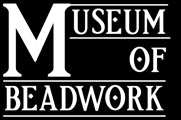Wabanaki

We Are All Related is a first-of-its-kind, permanent exhibit of Wabanaki beadwork, showcasing cultural knowledge and tradition through visual art from indigenous artists active in the community. Beading is an important part of Wabanaki culture, and now the beautiful works of art that are created in many indigenous households across Wabanaki territory will have a home at the Museum of Beadwork. Wabanaki Public Health and Wellness has partnered with the Museum of Beadwork to create this Powerful exhibit and opportunity for indigenous artists.
This is an exhibit about many things, among them, honoring those who came before us, and celebrating a truly unique art form practiced for countless generations.
It is also about healing. 
Arts and culture are crucial components to healing. This exhibit presents an opportunity for healing not only for the artists, but all Wabanaki people who experience it. This partnership between WPHW and the Museum of Beadwork is particularly committed to showcasing a generationally diverse group of artists and motivating the bead artists of tomorrow.
Representation for indigenous artists in museum spaces is vanishingly rare in the United States, even though the majority of indigenous people are artists themselves. With this endeavor, WPHW and the Museum of Beadwork are addressing the lack of visibility of indigenous art and artists in museum spaces and creating new healing opportunities for Wabanaki people.
We were delighted to have received a Community Arts Grant from the Maine Arts Commission for $7,000, most of which will go directly to the artists. We need additional support for the full realization of the exhibit. You can make an enormous difference by helping us reach our goal of an additional $5,000, which is needed to build the custom display and for other expenses.
Donations can be made here or please feel free to reach out to us directly at Director@museumofbeadwork.org.

